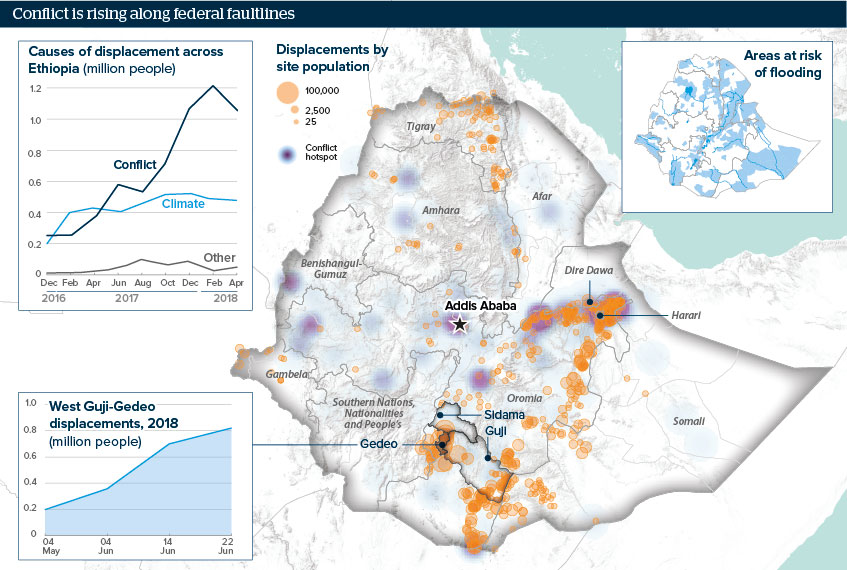Ethiopia’s local conflicts will pose governance risks
As attention focuses on developments at the national level, sub-national conflicts are boiling over
Source: IOM, OCHA, FEWSNET, ACLED, Oxford Analytica
Outlook
A border dispute between West Guji (Oromia) and Gedeo (Southern Nations, Nationalities and People’s Region) has displaced over 800,000 people since April. In nearby Hawassa, protests in mid-June among ethnic Sidama demanding their own federal state turned violent, leaving at least ten dead. Although violence along the Oromia-Somali border has subsided from dramatic highs in late 2017, clashes continue and approximately 1.1 million people remain displaced.
The causes and consequences of these flashpoints vary, but they all in different ways challenge prevailing governance structures. Without sustained conflict resolution efforts that channel local grievances into positive change, there is a risk that these conflicts could fester into something more dangerous.
Impacts
- The perceived success of protests in securing national change may encourage other interest groups to demand political change.
- Tensions between the ethno-regional components and affiliates of the ruling party could project local unrest onto the national stage.
- Aid agencies warn around 640,000 people may be displaced by flooding over the June-August rainy season, adding to humanitarian strains.
- Improved rains may ease food security in some areas, but the situation will remain precarious after four successive years of drought.
See also
- Afar-Somali conflict expands Ethiopia’s security woes - Apr 19, 2021
- Ethiopia’s Amhara-Tigray tensions risk new flashpoints - Dec 11, 2020
- Ethiopia will struggle to contain nationalist violence - Jun 28, 2019
- Ethiopia’s ethnic federalism will face strains - Dec 14, 2018
- Ethiopian premier faces challenges beyond his party - Oct 15, 2018
- Domestic unrest threatens Ethiopia’s peace - Sep 17, 2018
- Abiy may struggle to settle Ethiopia’s Somali east - Aug 13, 2018
- Ethiopia’s military alone cannot solve local conflicts - Jul 17, 2018
- Ethiopia’s shock therapy reform drive risks backlash - Jun 13, 2018
- More graphic analysis
